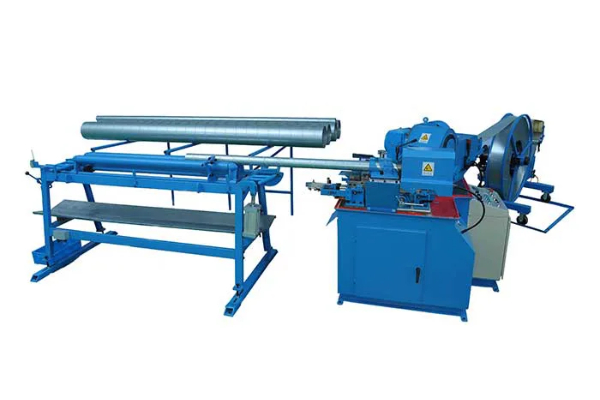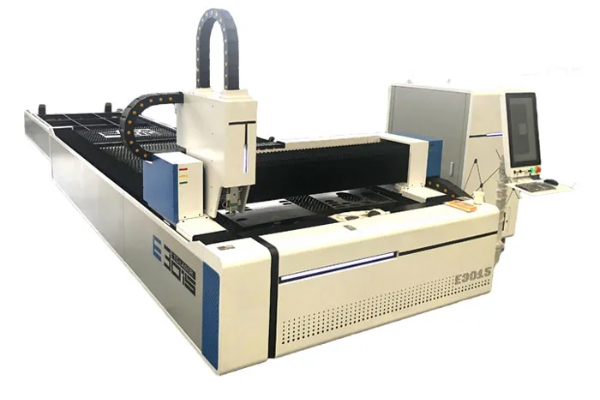
Understanding the Technical Specifications of Duct Fabrication Machines
- By:Metmac
- 2024-09-13
- 150
In the realm of HVAC (Heating, Ventilation, and Air Conditioning) systems, ductwork plays a crucial role in distributing conditioned air throughout a building. The fabrication of ducts requires specialized machinery, each with its own unique set of technical specifications. Understanding these specifications is essential for selecting the most appropriate equipment for a given project and ensuring the efficiency and effectiveness of the ductwork system.
Material Handling and Gauge Thickness
Duct fabrication machines are designed to handle various materials, including galvanized steel, aluminum, and stainless steel. The thickness of the material, specified as a gauge, determines the machine’s capacity and performance. Thicker gauges require more powerful machines, while thinner gauges can be processed by lighter-duty machines. Matching the machine’s gauge handling capability to the project specifications ensures optimal efficiency and prevents damage to the material.
Cutting Capabilities
The cutting capabilities of duct fabrication machines describe their ability to cut sheet metal into the desired shapes and sizes. These capabilities include the type of cut (e.g., plasma, laser, or shear), the maximum cutting thickness, and the cutting speed. The choice of cutting method depends on factors such as material type, precision requirements, and production volume. Higher cutting speeds and greater thickness capacities enable faster production, but may come at a higher cost.
Bending Accuracy and Capacity
Bending is a critical process in duct fabrication, allowing the creation of bends and transitions in the ductwork. Duct fabrication machines specify their bending accuracy in terms of tolerance, which determines the precision of the bends. Higher tolerance ensures greater accuracy, resulting in tighter joints and improved airflow performance. The bending capacity of a machine limits the maximum angle and radius of bends that can be produced. Selecting a machine with the appropriate bending capacity ensures compatibility with the design requirements of the ductwork system.
Automation and Control
Automation features in duct fabrication machines significantly enhance productivity and reduce the need for manual labor. These features may include automatic material feeding, tool selection, and programmable bending sequences. Advanced control systems allow for precision control of machine parameters, such as cutting speed and bending force, resulting in consistent and high-quality output. By reducing human error and increasing efficiency, automation contributes to optimal duct fabrication processes.
Speed and Efficiency
Speed is a crucial consideration when selecting duct fabrication machines, as it directly impacts production capacity. High-speed machines can produce a larger volume of ducts in a shorter amount of time, meeting the demands of large-scale projects. Efficiency refers to the machine’s ability to minimize material waste and optimize production processes. Machines with efficient cutting and bending algorithms reduce material consumption and downtime, leading to lower production costs and improved profitability.
Safety and Compliance
Safety is paramount in any mechanical operation, and duct fabrication machines incorporate various safety features to ensure the well-being of operators. These features may include guards, interlocks, and emergency stop buttons. Compliance with industry standards and certifications, such as CE or UL, guarantees that the machines meet safety and quality requirements. Adhering to safety regulations minimizes the risk of accidents and ensures a safe working environment.
Understanding the technical specifications of duct fabrication machines is essential for selecting the best equipment for a given project. By carefully evaluating material handling, cutting capabilities, bending accuracy, automation, speed, efficiency, and safety features, engineers and contractors can optimize the production of ducts that meet the specific requirements of a building’s HVAC system. This knowledge empowers professionals to achieve high-quality, cost-effective, and efficient ductwork installations, ensuring a comfortable and energy-efficient indoor environment.
-
High-Precision Solutions from Leading Sheet Metal Cutting Machine Manufacturers
2025/09/11 -
Reliable Sheet Metal Equipment for Sale to Support Precision Fabrication
2025/07/17 -
Advanced Duct Machine AC and Fabrication Solutions from Metmac
2025/07/12 -
The Advantages of Using a Sheet Roll Forming Machine in Manufacturing
2024/09/14
-
Efficient Sheet Metal Working Machines for Modern Manufacturing
2025/09/17 -
Advanced Sheet Metal Machinery for Precise and Efficient Fabrication
2025/09/17 -
High-Quality Sheet Metal Machinery for Efficient Manufacturing
2025/09/17 -
Advanced Steel Sheet Cutting and Forming Solutions for Modern Fabrication
2025/09/11
-
A Guide to the Latest Innovations in Sheet Metal Folding Machines
2024/11/29 -
Key Features to Consider When Investing in a Sheet Metal Folding Machine
2024/11/28 -
Enhancing Precision with Advanced Sheet Metal Folding Machines
2024/11/27 -
How to Choose the Right Sheet Metal Folding Machine for Your Workshop
2024/11/26





